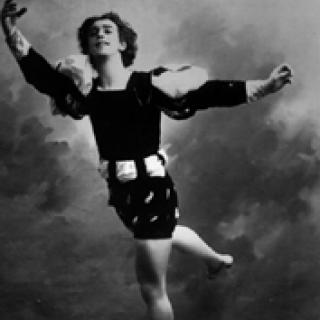Since 1996, the Library has created websites inspired by some of the physical exhibitions presented at its research centers, as well as a number of web-only presentations based on its collections.
Archived Exhibition Resources, A to Z
-
Utopia: The Search for the Ideal Society in the Western World
This online exhibition traced how women and men have, over the space of several thousand years of Western culture, imagined, depicted, described, and created new versions of ideal societies. It sought to show as well that the history of these places is inseparable from the histories of the people, cultures, and periods that gave birth to them.

-
Vaslav Nijinsky: Creating a New Artistic Era
Vaslav Nijinsky (1890-1950) was one of the 20th century's preeminent artists. The exhibition focuses on his career as a dancer and choreographer in a time marked by international disruptions of war as well as avant-garde collaborations and artistic energy. Nijinsky was a principal member of the Imperial Ballet in St. Petersburg and then became an international star through his performances with Serge Diaghilev's Ballets Russes in its seasons in Western Europe, from 1908. His celebrity and lasting fame resulted from his premiere performances in Mikhail Fokine ballets such as Petrouchka and Les Sylphides.

-
Vaudeville Nation
Vaudeville has been called the most influential entertainment genre in the nation's history. Vaudeville, and the related forms such as burlesque and prologs, provided freedom for self-expression of social and political commentary.

-
Where Do We Go from Here? The Photo League and Its Legacy (1936-2006)
In recognition of the 70th anniversary of the League's founding, this exhibition celebrates the diverse oeuvre of these photographers and their unflagging commitment to their medium. It also serves as a reminder that the political climate of the nation can have real consequences on its cultural life.

-
Yaddo
Founded in 1900 by philanthropists Spencer and Katrina Trask, Yaddo has emerged as America’s premier artists’ retreat, nurturing the talents of thousands of writers, painters, composers, and other creative artists. When its first guests arrived in 1926, Yaddo was hailed by The New York Times as a “new and unique experiment, which has no exact parallel in the world of fine arts.” As Yaddo’s second season began, a reporter for the Herald Tribune wrote, “It is a peculiar gratification to see in America such carefully conducted contributions as this to the nourishing of the spirit and its works in what we are told ad nauseam is a materialistic age. One sonnet would justify the whole experiment and render it immortal.”